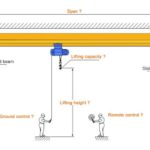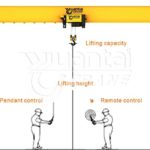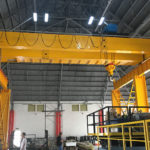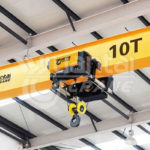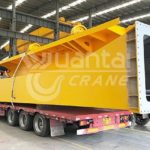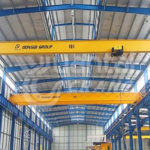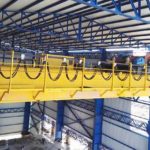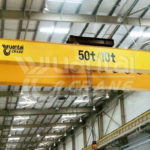Yuantai Crane is a professional manufacturer and service supplier of material handling equipment integrating R&D, design, manufacturing and marketing, all the cranes and electric hoists comply to FEM/DIN standard.
We have provided customers in many countries and regions with high-quality products and professional services. Among them, many customers have become regular customers who cooperate with us.
Recently, we received an inquiry from a customer in Thailand. He saw our product from their local customers and got good feedback from them, so he contacted our company. He wants to buy a new overhead crane for their factory.
The difference between European crane and ordinary crane
European-style cranes have light weight, compact structure and low energy consumption. A trolley and a hoisting mechanism are set on the bridge. The trolley can run forward and backward, and the cart can run and other mechanisms to achieve material objects in three-dimensional space.
The use of European cranes is good The design concept has the characteristics of small size, light weight and small wheel pressure. Compared with traditional cranes, the distance from the hook to the wall is small and the clearance is low. The European crane can work closer to the front and has a higher lifting height, which actually increases the working space of the existing workshop. Since the crane has the characteristics of light weight and small wheel pressure, the space of the new workshop can be designed smaller. Smaller plants mean considerable savings in initial construction investment, as well as long-term heating, air conditioning and other maintenance costs.
In addition, from the design structure point of view:
① European crane: the main girder adopts box girder structure, which has a reasonable structure and higher strength. The hoist is firmly combined with the lower flange of the main girder, which increases the lifting height, thereby increasing a good working space. , The headroom difference is large, up to 1.5 meters, the wheel pressure is reduced, and the rail bearing beam is reduced;
② Traditional crane: limited by the design of the hoist, only the traditional I-beam structure can be used. The structure is unreasonable and the utilization rate is low. The combined form of the lower flange of the main girder leads to a high incidence of breakaway accidents. From the point of view of the connection method, the European crane adopts a good bolt and end beam connection, which is a rigid connection, while the traditional form is a flexible pin connection. Comparing the two forms, the traditional form does not have a “three-legged” form, while the European crane If the precision control requirements are high during production, it is easy to appear that the four fulcrums cannot be stressed at the same time.
If you are searching for a material handling solution that will cover certain sections of your facility or to supplement a large overhead crane, a jib might be exactly what need. Jib cranes in general are pretty simple systems—a boom attached to a mast or mounted on a wall that rotates to cover a circular area. But, there are still many types of jib cranes with various characteristics depending on the needs of your operation. Each type may vary in degrees of rotation, purpose, mounting-style, beam type, and overall dimensions.
